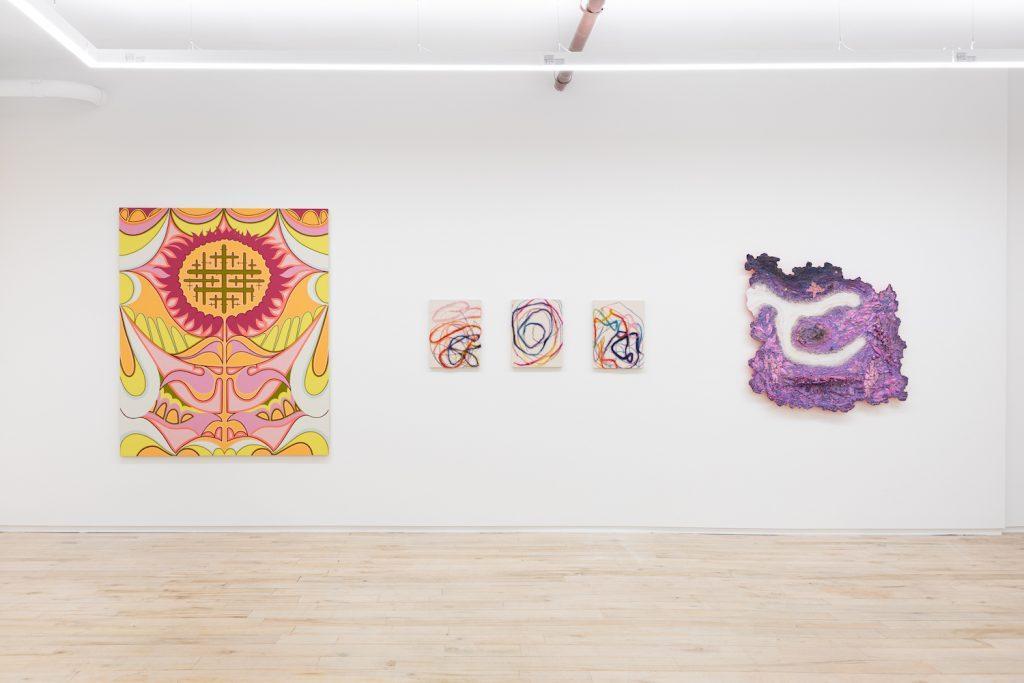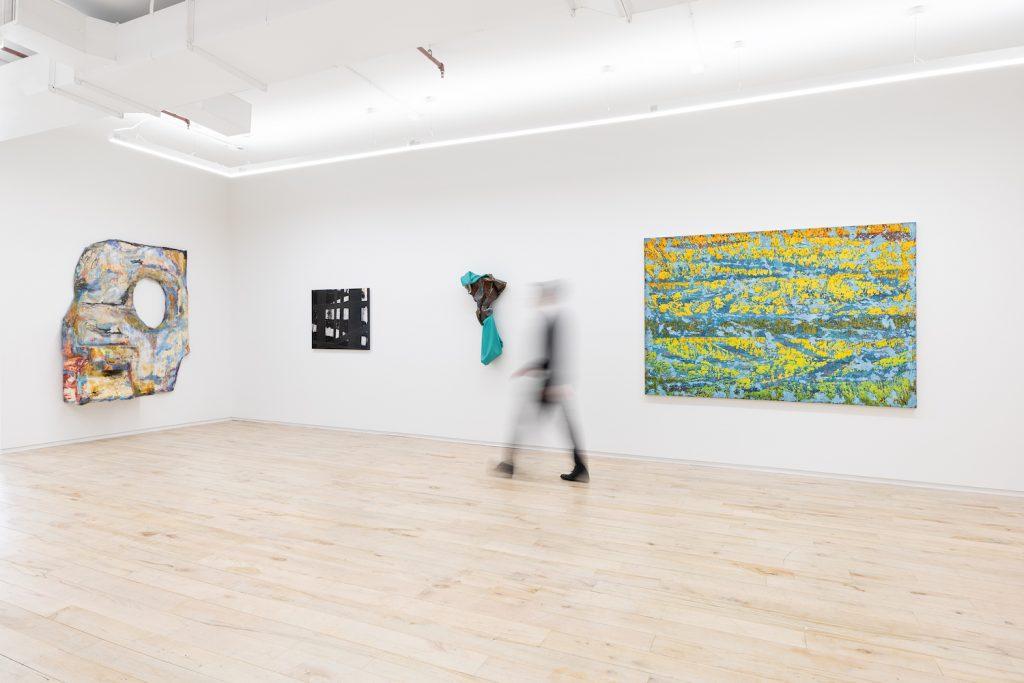(MENAFN- USA Art News) After eight years as a partner at a small but highly respected contemporary art gallery-Denny Dimin in Tribeca-art dealer Rob Dimin struck out on his own earlier this year with his eponymous gallery. During his tenure at Denny Dimin, he helped build the careers of artists including Amir H. Fallah, Justine Hill, Dana Sherwood, and Kennedy Yanko. Dimin worked closely with Fallah on his solo exhibition at CICA Vancouver and placed works with institutions like LACMA, the Parrish Museum, the Davis Museum at Wellesley College, and the Pérez Art Museum Miami.
We caught up with Dimin to hear what prompted the separation with his former partner, what it's like to run his own gallery, and how a small gallery navigates the risk-reward ratio of applying to and participating in the increasingly obligatory major art fairs.
What happened that you and your former gallery co-owner, Elizabeth Denny, decided to go your separate ways?
The breakup happened kind of abruptly at the end of December [2022]. It was not something that I was anticipating at the time. Elizabeth and I had worked together for eight years, [but] making decisions in the industry together with another person became really challenging to both of us.
It was one of these things where I was really surprised in the moment... it was not something where it was brought to me from my business partner saying 'Hey, I don't think this partnership is working.' In hindsight, there was some writing on the walls over the months and even years before.
What was the source of the tension, or where did disagreements stem from?
Honestly, I don't know what the formal catalyst was. It stemmed from years of having drastically different personality types. I'm very honest in how I perceive things; it might not be an absolute truth, but I'm candid. I'm very much a glass-half-full kind of person. Elizabeth started the gallery 10 years ago. I became her partner two years into that. So she was initially getting the gallery off the ground and then the gallery expanded and she needed and wanted a partner. I thought that was the way to go, as opposed to opening up my own space.
I'm really grateful for a lot of that insight in starting partnerships where a gallery was going into its third year. It allowed me to catch up quickly and learn without having certain startup fumbles that she had already gone through. However, in hindsight it was one of these things where I don't know if she ever really looked at me as a partner, even though we had a partnership agreement, my name was on the door, I cosigned the PPP loans, the lease was in both of our names.
What do you mean about different personality types?
I have a big personality. And so people started recognizing me as the face, or one of the faces of the gallery. I was the more social person in the business, the one going to events and talking to the press more regularly. We then started really having differing ideas on what program growth could look like. We had a lot of agreement, but I saw opportunities for certain programming shifts in our Asian space, and there was not a consensus. I think that became a point of conflict between the two of us.
What were your goals for Asia?
In the last seven months of our partnership, through most of the second half of 2022, I saw Asia as an opportunity to expand the program by testing the waters with new artists and really exploring the Asian market. We had hired a very informed and intelligent director in Asia, and she and I were becoming aligned in what the program should look like there. There was tremendous resistance and it became a polarizing issue.
We worked really hard to get into Art Basel Hong Kong. I had put together a proposal with an artist I was working extremely closely with named Amir Fallah. It just made sense for us to open up shop in Hong Kong. It became a huge pain point.

Installation view of“Surface Level” at Dimin, April 27–May 27, 2023. Artists: Amie Cunat, Courtney Childress, Ye Qin Zhu. Image courtesy of Dimin.
Would you say these are typical growing pains of a small- to mid-size galleries?
All of this tension came from the gallery having a lot of eyes but not necessarily the most commercially viable program. Like, our program was very institutionally friendly, but that doesn't always translate into market-friendly. I don't want to sound like I'm just commercial, but if you want to have these really ambitious institutionally focused projects, one needs to be conscious of the market and the system around you, especially at our scale-a gallery with two locations, and at the largest point I think we had 10 or 11 employees...not huge, but also not small.
And how do art fairs factor in?
Which fairs you get into really defines where you sit with the market. When you're a young gallery growing to a certain point, one of your metrics is fairs. The fairs are so heavily connected to the market. You have to have some sensational artists making really stellar work that's also in agreement with the trends in the market in order for doing those fairs to really make sense for a gallery.

Installation view of #1“Surface Level” at Dimin, April 27–May 27, 2023. Artists: Jillian Mayer, Nsenga Knight, Kennedy Yanko, Brennen Steines. Image courtesy of Dimin.
What advice would you give anyone going through a similar professional breakup?
I think making sure you keep a level head is important. Focus on positive things and rebuilding. Don't fight with the ex partner; that is what lawyers are for.
In March, three months after the split, you opened your own space, Dimin, not far from your former location, on Broadway in Tribeca. What has it been like running your own gallery?
At first the separation was really hard. I had to hit the ground running; I needed to be busy. You go through that whole startup phase. Finding a new location was really fun, even with its challenges and going through construction. I'm in a second-floor space that's quite large at 2,000 square feet-about double the size of the old space-and I love it.
The programming challenges are very real. Our partnership ended in December and I needed to open as soon as possible. But you can't expect artists to just throw together a solo show for you. So that started me at square one in many ways, but it was cool. I did probably like 50 studio visits in a matter of two and a half months.
One of the things I realized is that after seven or eight years of working with certain artists, you've built careers. Starting from scratch with artists is really challenging: it's learning their professional working styles, how they like to communicate, how they deal with deadlines, how seriously they take communicating privately with collectors versus understanding the role of the galleries.
I spent a really long time building relationships with other dealers, with artists, with fair directors, lots of people in the industry. When their position shifts and you don't hear from them in the same way, all of those years of work feel like they've been lost. That was my reason for needing to open so quickly-I needed to not skip a beat. People weren't even necessarily aware that the separation happened.
Is there anything you would have done differently?
I didn't engage the artists from the previous gallery soon enough. Part of this was what I believed to be out of respect to the partnership, but in hindsight, it was a mistake on my end. I should've called everybody the next morning-not try and 'take' them, but just inform them what was going on.
What will be your approach to art fairs going forward?
Personally I like doing fairs. The risk/reward is really scary, but I am a very social person and I like to talk to people. Those moments of hyper-communication, when you're meeting a lot of people in an afternoon, it's exhilarating to me. We're doing nada foreland in upstate New York this month. I applied to a major fair for next year; we'll see if it works. I did apply to Art Basel Miami Beach, assuming I was not going to get in but just indicating to the fair committee that it is a place I see myself in the near future. There is a possibility of maybe doing an alternate fair in Miami, a satellite fair.
What's up next?
“the fantasticals,” a group show of a lot of really cool artists, opens today, July 12. It has work from other galleries and artists that I'm friends with, including Nick Doyle, who shows with Perrotin, and Willie Stewart, who shows with Nicelle Beauchene We have a work from Ann Craven that we consigned from Karma, which was really cool, and 56 Henry gave a us a piece by LaKela Brown.
What else have you taken away from this experience?
I love and feel absolutely blessed to be an art dealer. It is like one of the coolest, quirkiest, strangest jobs in the world. It is a freakin' blessing to wake up and talk about art and go to sleep, even if it's a frustrating day.